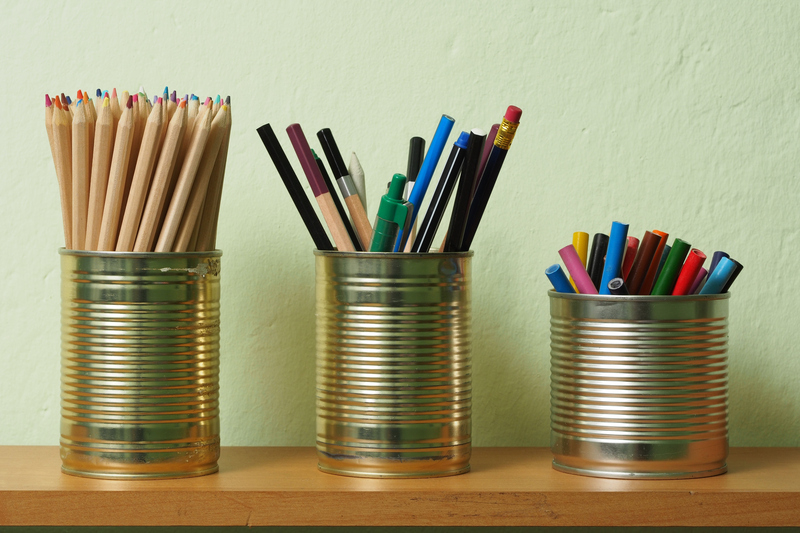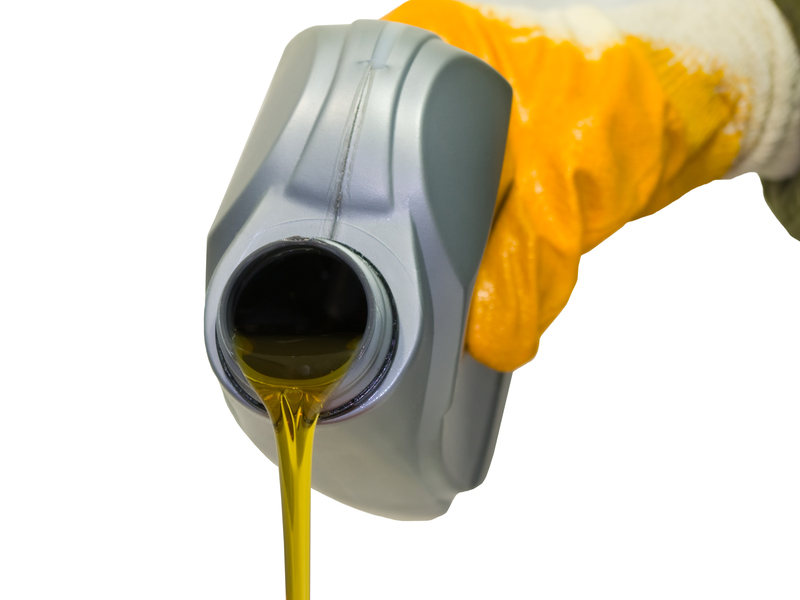Smart Approaches to Plant Pot Disposal
Gardeners and plant enthusiasts know the joy of adding new greenery to their spaces, but each new purchase often comes with a plant pot that eventually needs to be discarded or replaced. As eco-consciousness increases, so does the need for smart approaches to plant pot disposal. Disposing of flower pots and containers in sustainable ways not only reduces landfill waste but also bolsters broader environmental efforts. Let's explore the most comprehensive, environmentally friendly, and innovative plant pot disposal solutions available today.

Why Responsible Plant Pot Disposal Matters
Plant pots might seem like small items, but millions are produced and discarded each year. Traditional disposal methods, such as tossing pots in the trash, contribute to excessive landfill waste and environmental degradation. Most pots are made from plastics (like polypropylene or polystyrene), ceramics, or biodegradable materials, each with their unique disposal challenges. By adopting smart disposal techniques, you contribute to:
- Reducing plastic pollution in our ecosystems
- Minimizing landfill waste and associated environmental hazards
- Promoting circular economy principles through reuse and recycling
- Encouraging sustainable gardening practices
Common Types of Plant Pots and Their Disposal Issues
- Plastic Pots: Commonly used for seedlings and commercial plants; often difficult to recycle due to soiling and mixed plastics.
- Ceramic and Terracotta Pots: Durable but heavy, costly to transport, and not biodegradable.
- Biodegradable Pots: Designed to break down, but only under specific conditions; not always accepted by composters.
- Metal and Decorative Pots: May have coatings or paints, complicating recycling.
Eco-Friendly Plant Pot Disposal Methods
1. Reuse Plant Pots Creatively
Repurposing plant pots is one of the smartest and most sustainable ways to handle old containers. Consider these creative reuse ideas:
- Seed Starting: Clean old pots and use them for germinating seeds for your next planting cycle.
- Organizational Tools: Smaller pots are excellent for organizing desk supplies, garage tools, or even kitchen herbs.
- Art Projects: Pot painting, mosaics, and upcycling into garden crafts can give new life to tired containers.
- Gifting: Fill clean, gently used pots with plants or homemade treats and give as eco-friendly gifts.
- Soil Scooping and Mixing: Use old pots for mixing fertilizers or transporting small amounts of soil.
By giving plant pots a second life, you reduce waste and inspire sustainability, all while saving money and adding a personal touch to your gardening routine.
2. Donate Unwanted Pots
If you have a surplus of plastic or ceramic plant pots in good condition, consider donating them instead of disposal. Several organizations and community resources welcome donations of usable pots:
- Community Gardens: Urban agriculture groups, schools, and non-profits often seek garden supplies.
- Local Plant Nurseries: Many nurseries hold "pot return" programs or will accept donations for reuse.
- Neighborhood Swaps and Sales: Host or join local events focused on swapping gardening supplies.
- Art Projects and Schools: Teachers and artists may use old pots for crafts and educational purposes.
Donating used plant pots keeps them in circulation and supports local green initiatives.
3. Seek Out Plant Pot Recycling Programs
Recycling plant pots can be challenging because typical curbside programs don't accept them: plastic pots are often soiled, and their resin codes (often 5 or 6) are not universally recyclable. However, smarter options are emerging:
- Big-Box Stores: Large retailers like Lowe's, Home Depot, and local garden centers sometimes offer plant pot recycling drop-offs.
- Specialized Recycling Centers: Some municipal facilities have programs for hard-to-recycle plastics and ceramics.
- Manufacturer Take-Back Programs: Certain brands offer return schemes for their plastic pots or biodegradable containers.
Always clean pots thoroughly before recycling, as dirt can contaminate recycling streams.
4. Compostable and Biodegradable Pots: What You Need to Know
Many modern pots claim to be biodegradable or compostable. These pots, made from peat, coconut coir, rice hulls, or other organic materials, promise an easy, earth-friendly disposal. But there are key points to remember:
- Check for Certification: Look for credible certifications (like ASTM D6400 or EN 13432) that verify compostability.
- Home vs. Industrial Composting: Some biodegradable pots only break down in high-heat, industrial composters.
- Garden Performance: Many biodegradable pots are designed to be planted directly into the soil, minimizing disposal altogether!
- Non-Compostable Additives: Watch out for coatings or additives that may inhibit breakdown.
Innovative Strategies for Sustainable Outdoor Container Disposal
Community-Centered Pot Collection Events
Many cities, garden clubs, and nurseries now host plant pot amnesty days--events where you can bring your unwanted containers for responsible recycling or reuse. These gatherings raise public awareness and provide centralized, accessible disposal options.
Upcycling Plant Pots for Practical Uses
- Vertical Gardens: Mount old pots on fences or walls to create living walls of herbs or flowers.
- Pet Bowls and Bird Feeders: Clean, shallow pots double as bowls or garden-friendly feeders.
- Kids' Crafts: Let children convert plant pots into mini fairy houses, drums, or bug hotels!
- Decorative Lighting: String fairy lights through upside-down pots for whimsical outdoor lanterns.
Supporting Pot Return and Refill Programs
The most advanced nurseries and garden suppliers are introducing closed-loop container systems:
- Pot Return Incentives: Earn discounts, loyalty points, or free plants by returning used pots to participating retailers.
- Refill Initiatives: Instead of buying new containers, bring your own for soil, amendments, or new plants.
Such programs directly address waste reduction at the source and encourage consumers to think about the container lifecycle.
Best Practices for Smarter Plant Pot Disposal
Whether recycling, reusing, or returning, follow these sensible steps for efficient plant pot disposal:
- Clean Thoroughly: Remove all soil, roots, and labels. Dirty pots are commonly rejected from reuse or recycling streams.
- Sort Pots by Material: Separate plastic, ceramic, biodegradable, and decorative pots for initiatives best suited to each type.
- Check Local Guidelines: Rules vary by municipality and facility--always verify before dropping off.
- Spread Awareness: Tell friends and neighbors about available options and events for smarter pot disposal.
Special Considerations for Apartment Gardeners
Urban gardens often generate a unique mix of container waste (small plastics, decorative pots, or window boxes). Encourage property managers to adopt shared disposal points and partner with local reuse programs. For those with minimal space, compact stacking and donation strategies are especially useful.
Choosing Smarter Pots for Future Sustainability
Ultimately, eco-friendly plant pot disposal starts with wise purchasing:
- Buy Durable or Recycled Pots: Invest in containers made from post-consumer recycled plastic or sustainably sourced ceramics.
- Opt for Plantable Pots: Choose pots designed to be buried, like those made from peat, wood fiber, or coir.
- Minimize Decorative Coatings: Select simple, uncoated pots for easier recycling and upcycling.
By prioritizing sustainable materials, you ensure simpler, greener disposal down the road.
Frequently Asked Questions About Plant Pot Disposal
- Can all plastics from plant pots be recycled?
No. Most recycling centers do not accept soiled plastic plant pots or specific plastics (like #5 or #6). Specialized drop-offs are often required. - Are biodegradable plant pots suitable for backyard composting?
Some are, but many require industrial composting to break down fully. Always check the manufacturer's instructions and local composting capabilities. - What is the best way to clean plant pots before disposal?
Use a stiff brush to remove soil and soak in a 10% bleach solution to kill pathogens before reuse or recycling. - How can I find a plant pot recycling program near me?
Ask your local nursery, check municipal waste program websites, or search online for plant pot recycling drop-off events in your area.

The Environmental Impact of Smarter Plant Pot Disposal
When gardeners go beyond the trash can and choose innovative plant pot disposal methods, the impact ripples outward:
- Healthier Soils and Waterways: Less plastic in the environment preserves ecosystem health.
- Lower Carbon Footprint: Recycling and reuse reduce the energy needed for manufacturing new pots.
- Stronger Community Ties: Local swaps and collection drives bring neighbors together and build sustainable habits.
By integrating smart, sustainable pot disposal strategies into your gardening routine, you play a vital role in protecting the planet for future generations.
Conclusion: Cultivating Sustainability in Every Container
Plant pot disposal may seem trivial, but every choice matters in the journey toward a greener world. By adopting smarter approaches--reusing, donating, recycling, upcycling, and selecting sustainable pots from the outset--you reduce waste, support your community, and foster a brighter, more eco-friendly gardening culture.
Remember, next time a plant outgrows its pot or you refresh your garden decor, pause and apply these intelligent, planet-friendly disposal techniques. The cumulative effort of thoughtful gardeners leads to blooms not just in the soil, but in our shared environmental wellbeing.
Ready to make your garden smarter?
Start today by sorting your existing plant pots and exploring local, sustainable disposal options. Share these tips, and together let's cultivate a sustainable future--one plant pot at a time!